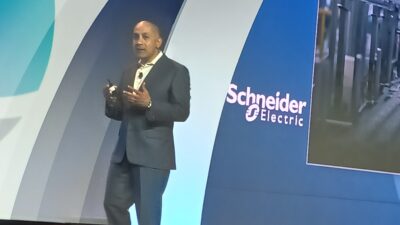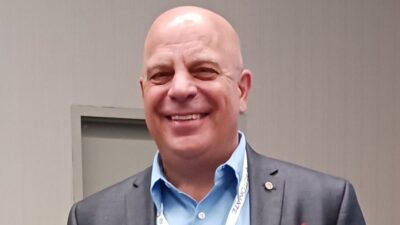Embedded developers enjoy more freedom in designing computing, networking, and communication systems, according to attendees and organizers of a recent technology gathering. “Design Freedom” was the theme that drew nearly 2,000 total attendees to the 2nd annual Freescale Technology Forum held in Orlando, FL, July 24-27.
Embedded developers enjoy more freedom in designing computing, networking, and communication systems, according to attendees and organizers of a recent technology gathering. “Design Freedom” was the theme that drew nearly 2,000 total attendees to the 2nd annual Freescale Technology Forum held in Orlando, FL, July 24-27. The forum catered to 1,300 users/customers and approximately 400 participants.
Some 350 hours of technical sessions and educational opportunities were on the program, including interactive demonstrations in a 28,000-sq-ft Technology Lab referred to as an “engineer’s playground.” More than 60 Tech Lab partner participants included Agilent Technologies, Atmel, Green Hills Software, MontaVista Software, National Instruments, QNX Software Systems, and Wind River.
In the general session, Freescale Semiconductor Inc. chairman and chief executive officer Michel Mayer outlined three key company attributes: momentum to continually improve its design, manufacturing, and operations efficiencies; an environment for “pervasive innovation;” and a vision of limitless potential for growth through collaboration.
A doubling of Freescale’s “already high” annual patent filings (and growth to 5,300 patent families);
Controller continuum—a microcontroller roadmap to provide pin-for-pin compatibility from 8-bit to 32-bit devices, said to be an industry first;
Introduction of reportedly the world’s highest-performance, fully programmable multi-core digital signal processor (MSC8144) that delivers performance equivalent to a 4 GHz single-core processor; and
First volume production of a commercial magnetoresistive random-access memory (MRAM) device.
Looking ahead to a world more intelligently connected, Mayer envisioned the likes of terabit/sec rather than megabit/sec information transfer rates; autonomous control of cars on major highways; and unprecedented availability and access to automated devices and microprocessors that could improve the quality of life at home and on the job. “Design freedom” has a large role in making that possible, he said.
Power.org—developer of Power Architecture technology—announced an improved, merged instruction set architecture (named Power ISA) and a new platform specification to promote future developments of the architecture. Power Architecture (PA) technology is reportedly the leading platform for enterprise servers, automotive systems (powertrain, advanced safety, etc.), wireless and wireline infrastructure, and enterprise routing/switching, according to Power.org. It also is said to offer the most diverse market penetration of any microprocessor in the industry today. Power ISA V. 2.03 should be available by October.
Some industrial standards used for time-critical applications (motion control and sensor-to-actuator synchronization) are being adopted for networking and computing. A case in point is integration of IEEE 1588 time-synchronization protocol into Freescale PowerQuicc communications processors through collaboration between Freescale Semiconductor and Ixxat, a supplier of industrial and automotive communications technologies. IEEE 1588 protocol target applications include time-sensitive telecommunication services, and test and measurement devices, which must maintain accurate time synchronization with devices under test in many operating environments, said Glenn Beck, industrial segment manager for Freescale’s Networking and Computing System Group. For more, see Aug. 22 “Weekly News.” Subscribe for free at www.controleng.com .
www.freescale.com , www.ixxat.com/ieee , www.power.org



